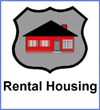Crime Free Association
Crime Free CondominiumsKeep Illegal Activity Off Rental PropertyBecause the Crime Free Condominium Program is virtually identical to the Crime Free Multi-Housing Program (with some very key differences), you should review the information about the Crime Free Multi-Housing Program before you continue. Adaptation to CondominiumsIn apartment communities, you typically have one owner (or an ownership group) and one management team, which has the ultimate authority over the land and all the rental units. This is not true with common interest developments like townhomes and condominiums. In these communities, you can have as many owners as you have actual dwelling units. Most units may be owner occupied with only a small number of rentals. However, on some properties you may have very few owner occupied units and a majority of renters. These offer the biggest challenge. Homeowners AssociationOn condominium properties, a Homeowners Association (HOA) is elected to oversee the common areas and units. The CC&R’s, along with separate Rules and Regulations, dictate how the property can be used, and what measures will be taken if the property or rules are abused. In some cases the HOA can levy fines against an owner, place liens on their unit for failure to pay the fine, and in some cases even foreclose on the lien. It is important to convey that the Crime Free Condominium Program only applies to rental units. The authority to enforce rules and evict tenants come from the Crime Free Lease Addendum, which is identical to the one used in the Crime Free Multi-Housing Program. As with any of the Crime Free Programs, you should never attempt to teach or manage a Crime Free Program without completing a certified Train-the-Trainer workshop, conducted by a certified Crime Free Instructor. This is especially true with the Crime Free Condominium Program. There is a lot you need to know before you adopt this program, even if you are a seasoned instructor in any other Crime Free Programs. Basic Points to CoverThe Crime Free Multi-Housing Program was designed for apartments and other rental properties, which use one manager (or a management team) to manage all rental units on the property. Because townhomes and condominium associations have multiple owners, many of which can live out of state, the Crime Free Condominium Program's effectiveness can be limited by the ratio of locally owned rental units.1. Many associations call the Crime Free Unit because they cannot meet the 50% requirement of the typical Block Watch Program. Because the Crime Free Program does not require 50% participation at a block watch meeting, they mistakenly assume the Crime Free Program Certification will be much easier for them to achieve. 2. To follow the Crime Free Program, the association must have a Board of Directors with a lot of determination and power. All of the components of the Crime Free Multi-Housing Program must be enacted by the board into their codes, covenants and restrictions (CC&R’s), or passed by the board into their community rules and regulations. Depending on the association, you may need a majority vote for the CC&R’s, but not for the rules and regulations. The board may have the power to write new rules and regulations without the owners’ votes. An attorney should be consulted. 3. The board will need to require criminal background checks on tenants from all of the owners (who rent out their unit). They will also have to mandate that all renters sign the Crime Free Lease Addendum. The board should require proof that this is being done. 4. The board needs a representative to stay in touch with the local police department so they are aware of the police visits to the property. The HOA must notify all of the owners about all non-compliances, with the understanding that the owners will serve the appropriate notices to the renters. 5. If an owner refuses to serve a non-compliance notice, or evict a renter for criminal activity, the board will assess a fine (from $50.00-$500.00) in proportion to the offense. If the owner does not pay the fine, the board will put a lien on the unit and may possibly foreclose or auction it off. 6. The homeowners association needs to send a majority of its board members through the 8-hour Crime Free Program workshop so that they are fully aware of all of the provisions of the Crime Free Programs. 7. It is up to the Board of Directors to see that all of the steps (in phase two and phase three) of the Crime Free Program are followed. If the HOA board cannot implement the program (or maintain the program) they would be better off using a block watch approach. 8. Crime Free Coordinators need to meet with the board and their attorney to discuss the above actions before too much time is invested into a particular property. Some boards do not have the ability (or desire) to meet all of these requirements. 9. The property will receive special signs and certificates to be posted at the property, showing it is a condominium or townhouse community, so it will not confuse the general public into thinking the property is a typical apartment community. 10. When a new board is seated, they will have to send new board members through the Crime Free Program training. As long as a majority has been trained, they are within the Crime Free Program guidelines. Crime Free Condominium ProgramClick HereTo LocateFuture WorkshopsLinks to our Associate Members
|
| International Crime Free Association |
Only POLITE & DETAILED emails are answered You MUST provide your name & phone number We give NO legal or security related advice! Send Email to Tim |








